What does dynamics mean in music? Dynamics describes the volume in music. It indicates how loud or soft a passage in a piece of music should be played. In the following, I explain dynamics in music as well as the most important dynamic indications. You will read a definition of dynamics in music, hear audio examples and get a PDF Cheat Sheet.
What you will read in this article:
Dynamics (Music) – Meaning
Not every passage in a piece of music is played equally loud. To indicate how loudly or how softly a passage should be played and how the transition between passages should be shaped, dynamics is used.
There are three types of dynamics:
- Step dynamics (also echo dynamics or terraced dynamics),
- Transition dynamics and
- Accent dynamics.
In the following, I introduce these three types of dynamics, and then give a definition of dynamics in music.
Step Dynamics
This is the simplest case: the change in volume is cut-like. For example, the music is first soft, then loud. Schematically it would look like this:
In the scheme you can see a clear step. Because of this step, this type of dynamics is called step dynamics.
Transition Dynamics
However, step dynamics is not the only way to indicate volume in music. After all, the volume doesn’t always have to increase or decrease suddenly, but can also develop slowly. For example like this:
In this scheme you can see that the initial and target levels of the volume are the same as in the scheme of the step dynamics. In between, however, there is now no longer a step, but a transition. That is why this type of dynamics is called transition dynamics.
Accent Dynamics
Finally, there is a third way to describe volume in music. Strictly speaking, this is an extremely condensed form of step dynamics. Schematically, this third type looks like this:
The volume is at a basic level, from which it deviates only briefly and then returns to it. The dynamics here serve to accentuate moments in the music. Therefore, this type of dynamics is called accent dynamics.
Definition of Dynamics (Music)
Now you already know what volume is for and what types of volume there are. We can now summarize this in the definition of dynamics in music:
Dynamics in music specifies, first, the volume at which a passage should be played, and second, how the transition between passages of different volume should be shaped. A transition can be step-like (step dynamics), gliding (transition dynamics), or abrupt (accent dynamics).
Definition of Dynamics (Music)
How Is Volume Notated? Dynamic Indications Explained
Now, composers must somehow make it clear to musicians how they envision the volume in their piece. For this purpose, dynamic indications have become established and are written in the score.
These dynamic indications are classically given in Italian, the language of music. From the Romantic period onward, composers also notated the dynamic indications in their native languages.
Dynamic Indications of Step Dynamics
The two most important dynamic indications are piano (quiet/soft) and forte (strong/loud/powerful). In the score, these terms are abbreviated as p and f.
Now it is important to understand the following two principles:
- Adding the same letter means strengthening the effect. For example, pp means pianissimo (very soft) and is thus softer than p (piano). Correspondingly, ff (fortissimo, very loud) is louder than f (forte).
- The term mezzo (“half”, abbreviated m) weakens the dynamic indication. Therefore, mp (mezzo piano) is slightly louder than p (piano), but mf (mezzo forte) is slightly softer than f (forte).
Once you understand these two principles, the eight basic levels of dynamics will no longer be a problem for you.
Dynamic Indications of Transition Dynamics
There are also two dynamic indications in transition dynamics that are most important: The word crescendo (growing) stands for a gradual getting louder, the word diminuendo (diminishing) for a gradual getting softer. These terms are abbreviated as cresc. and dim. Instead of diminuendo, decrescendo can also be used.
There are two ways to represent these terms in the score: either with the abbreviated terms or with so-called hairpins, which are open at the loud part and closed at the soft part:

It is also common to add information about the step dynamics to clarify the initial and target levels of the volume:
Dynamic Indications of Accent Dynamics
In accent dynamics, there are countless dynamic indications. This is because basic words from step dynamics can be combined with other terms. An example:
The indication sforzato (abbreviated sfz) indicates that a note is to be played with sudden emphasis. However, the strength of this emphasis can be increased by simply inserting several f‘s, for example sffz.
Theoretically, one could insert an infinite number of f, but in practice, rarely more than 3 are used.
Important: Accent dynamic indications do not cancel out the step dynamic that applies at the position. Thus, if the sfz or sffz just described are in a p environment, it would look schematically like this:
The return to the basic volume after the accentuated note does not need to be notated separately.
Now, you can probably imagine that this notation is very tedious if you want to emphasize several notes in a row. If you put an sfz or sffz under each note, the whole page would be black. Therefore, there are more elegant solutions for this case: articulation indications. (Read more about this in the overview article on articulation in music).
Dynamic Indications at a Glance – Table, Audio Examples and Cheat Sheet
After the above explanations, I’d like to give you an overview of dynamics in music below. Therefore, here you will find a table with the most important dynamic indications, listening examples for the different types of volume, and a cheat sheet for download.
Table of the Most Important Dynamic Indications
| Step Dynamics | ||
| Dynamics Indications | Terms | Meaning |
| ppp | piano-pianissimo | as soft as possible |
| pp | pianissimo | very soft |
| p | piano | soft |
| mp | mezzo piano | semi-soft |
| mf | mezzo forte | semi-loud |
| f | forte | loud |
| ff | fortissimo | very loud |
| fff | forte-fortissimo | as loud as possible |
| Transition Dynamics | ||
| Dynamics Indications | Terms | Meaning |
| cresc. | crescendo | become louder, increasing |
| dim. | diminuendo | become softer, decreasing |
| decresc. | decrescendo | become softer, decreasing |
| Accent Dynamics | ||
| Dynamics Indications | Terms | Meaning |
| sf, sfz | sforzando, sforzato | with strong emphasis |
| rfz | rinforzando | reinforcing |
| fz | forzando | with sudden accent |
| fp | forte piano | first loud, then soft |
| sfp | sforzato piano | increased effect of forte piano |

Advanced: Even More Dynamic Indications
If you have already studied classical music more closely (or even play an instrument yourself), you have probably noticed that by no means all dynamic indications are included in the table. The variations that exist of these dynamic indications are so countless that they go beyond the scope of this overview article on dynamics in music. I have therefore listed them in separate articles:
- 24 Ways to Say “Softer” in Music
- 12 Ways to Say “Louder” in Music
- Volume And Articulation: the 39 Most Important Terms in Music
Dynamics (Music) – Audio Examples
Now that you know the definition of dynamics in music and have an overview of dynamic indications, it’s time to experience dynamics in music audibly! Therefore, you will find a corresponding example for each volume type below.
Audio Example for Step Dynamics
A classic example of step dynamics is the beginning of Mozart’s Symphony No. 41 (“Jupiter”). Can you hear how loud and soft alternate here?
(You are listening to the hr-Sinfonieorchester conducted by Paavo Järvi).
Audio Example of Transition Dynamics
The transition from the 3rd movement to the 4th movement in Ludwig van Beethoven’s 5th Symphony is famous: from a dynamic zero point, the volume increases to the radiant C major entry of the trombones:
(The Concertgebouw Orchestra plays. The conductor is Iván Fischer.)
Audio Example of Accent Dynamics
A prime example of constant accent dynamics, and feared among conductors and orchestral musicians alike because of its enormous technical difficulties: the last part of Igor Stravinsky’s Le sacre du printemps:
(Sir Simon Rattle conducting the London Symphony Orchestra.)
Cheat Sheet on Dynamics in Music
Was that a bit much to take in? No problem. Download a cheat sheet on dynamics in music here.
On this cheat sheet, you will once again find the definition of dynamics, the schematic representations of the three types of dynamics, and the table of the most important dynamic indications.
A Brief History of Volume in Music
Below is a brief overview of what role dynamics played in each era of music.
(One more note: epoch designations are very controversial in music. In particular, the terms late romantic, modern, and postmodern are historically ambiguous. For the sake of simplicity, however, I will use the most common epoch designations in the following).
Baroque
In baroque music, dynamics are rarely indicated in the score. However, this does not mean that dynamics played no role in baroque music. Rather, it is known today from historical sources that dynamic gradations, transitions and accentuations were already used in the Baroque period.
Early examples of dynamic indications can be found in the works of the early Baroque composers Giovanni Gabrieli, Johann Hermann Schein and Heinrich Schütz. In the early Baroque, written dynamic indications were usually used to encourage the entire ensemble to play softer or louder.
In the late Baroque, dynamics were given additional tasks. The example from Antonio Vivaldi’s Spring is famous: Vivaldi has the violas imitate barking dogs. To emphasize this effect, the violas are given a forte indication, while all other instruments play piano. Listen for yourself – do you recognize the dogs? 😊
(You’re listening to the Voices of Music Ensemble with soloist Alana Youssefian).
Also important in the Baroque period were changes between smaller instrumental groups and the full orchestra within the same piece, as well as changes of register on the keyboard instruments organ and harpsichord. As a result, step-like changes in dynamics were often automatically achieved. This is often called terraced dynamics, especially in Baroque music.
Pre-classical Period
The spectrum of dynamic indications expanded in the pre-classical period. This was also due to instrument construction, because there was a new keyboard instrument: the fortepiano.
On the fortepiano, in contrast to the harpsichord and organ, one could influence the volume by pressing the keys down more or less. (This is called touch dynamics. It still works that way on the modern piano today).
Watch Steven Devine of the Orchestra of the Age of Enlightenment explain the fortepiano:
The pre-classical period also includes the famous Mannheim School. The court musicians of the then Mannheim Elector Karl Theodor were known for their high level of playing. They were especially famous for their Mannheim Crescendo. (If this is interesting to you, read more here.)
Classical Music
In classical music, dynamics becomes independent and clarifies formal sections. You have already heard an example of this in this article (audio example of transition dynamics): in Beethoven’s 5th Symphony, the transition from the 3rd to the 4th movement is clarified by the dynamics.
The use of dynamics as an effect is also increasingly found in classical music. A famous example: the beginning of Beethoven’s 3rd Symphony (“Eroica”). Before the actual beginning of the (soft) musical action, there are two loud chords (so-called noise killers 😊):
(You’re listening to the hr-Sinfonieorchester conducted by Andrés Orozco-Estrada).
Romanticism to Late Romanticism
In the Romantic period, dynamic indications became more and more extreme: while the classics had still limited themselves mainly to indications from pp to ff, the dynamic spectrum was now significantly expanded – dynamic designations such as pppp or ffff are not uncommon. Listen, for example, to the buildup, climax and conclusion in the last movement of Gustav Mahler’s 2nd Symphony:
(Played by the Concertgebouworkest, conducted by Mariss Jansons).
Modernism/Postmodernism
A distinctive feature of modernism is that compositions have been written that focus extremely on the parameter of dynamics. Probably the most famous example is Maurice Ravel’s Boléro, which is a single, large-scale crescendo.
(It’s played by the West-Eastern Divan Orchestra. The conductor is Daniel Barenboim).
Dynamics (Music) – Frequently Asked Questions
Congratulations! You are now familiar with dynamics in music. Below are short answers to the most common questions about dynamics.
Dynamics in music specifies, first, the volume at which a passage should be played, and second, how the transition between passages of different volume should be shaped. A transition can be step-like (step dynamics), gliding (transition dynamics), or abrupt (accent dynamics).
Dynamics in music include uniform volumes (step, echo, or terraced dynamics), sliding changes in volume (transition dynamics), and abrupt changes in volume (accent dynamics).
There are eight basic volume levels in music. From soft to loud: piano-pianissimo (ppp, as soft as possible), pianissimo (pp, very soft), piano (p, soft), mezzo piano (mp, quite soft), mezzo forte (mf, quite loud), forte (f, loud), fortissimo (ff, very loud), forte-fortissimo (fff, as loud as possible).
The Italian term forte (abbreviated f) is used in music for loud passages.
The Italian term piano (abbreviated p) is used in music for soft passages.
Dynamic signs in music are dynamic indications. These indicate step-like volumes (e.g., forte and piano), transitions in volume (e.g., crescendo and diminuendo), and abrupt changes in volume (e.g., sforzato or forzando).

Jonathan Stark – Conductor
Hello! I'm Jonathan Stark. As a conductor, it is important to me that visits to concerts and operas leave a lasting impression on the audience. Background knowledge helps to achieve this. That's why I blog here about key works of classical music, about composers, about opera and much more that happens in the exciting world of music.

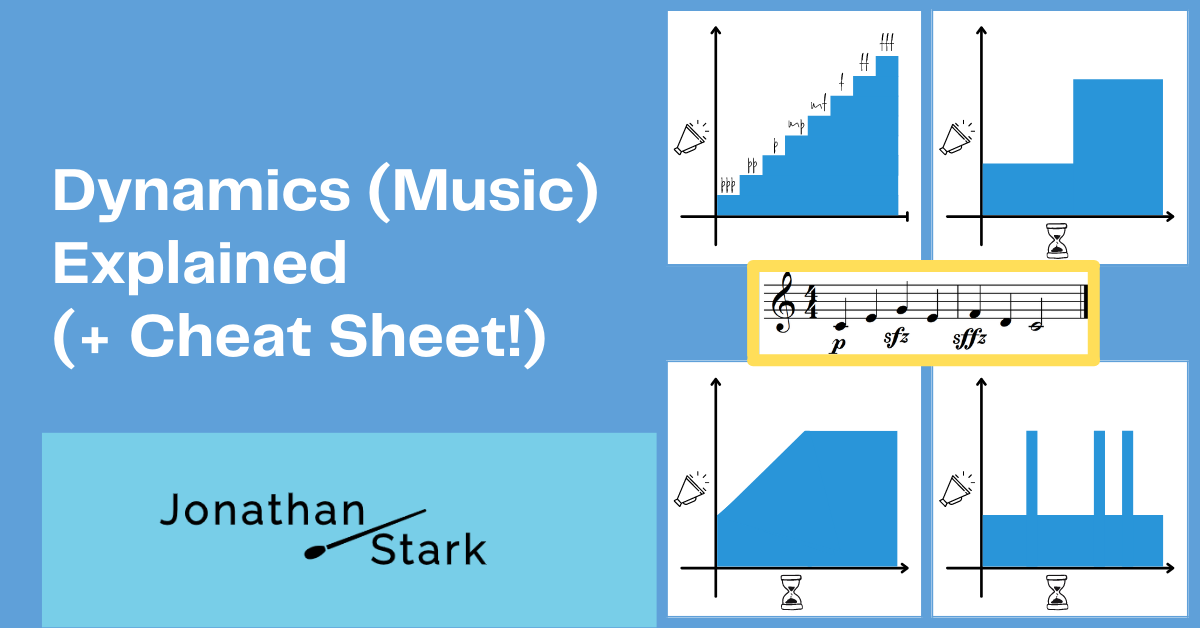
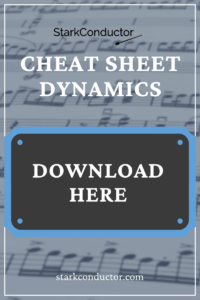

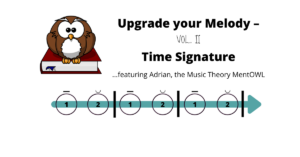
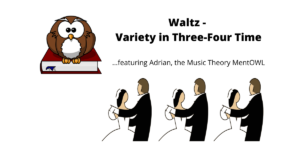

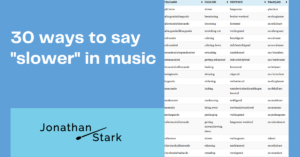
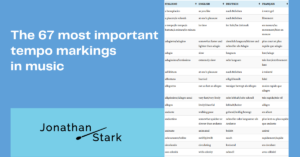
Wow